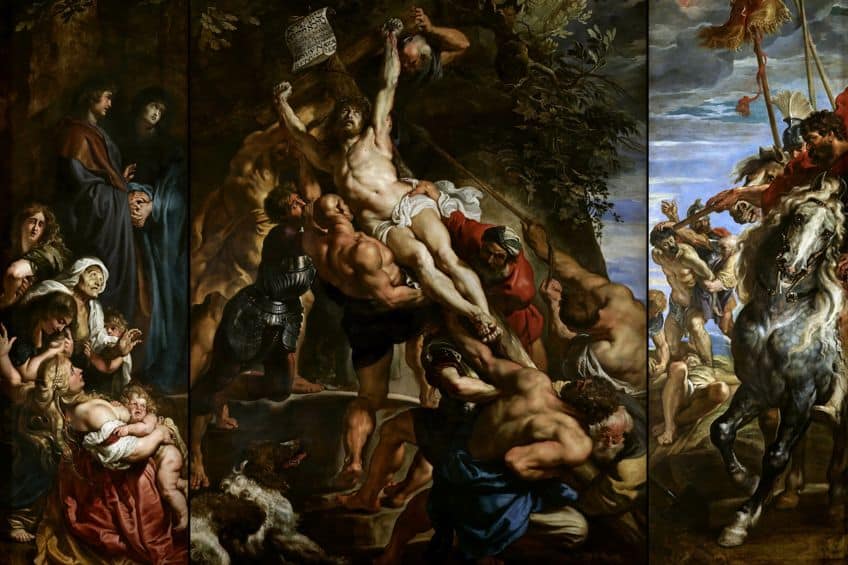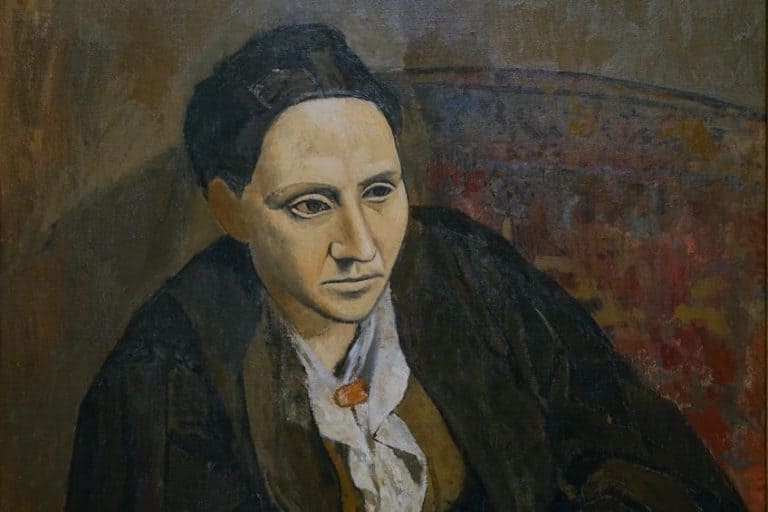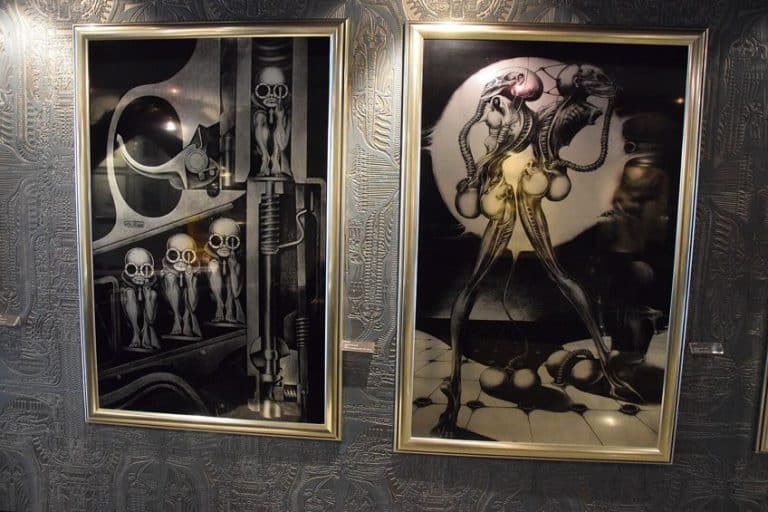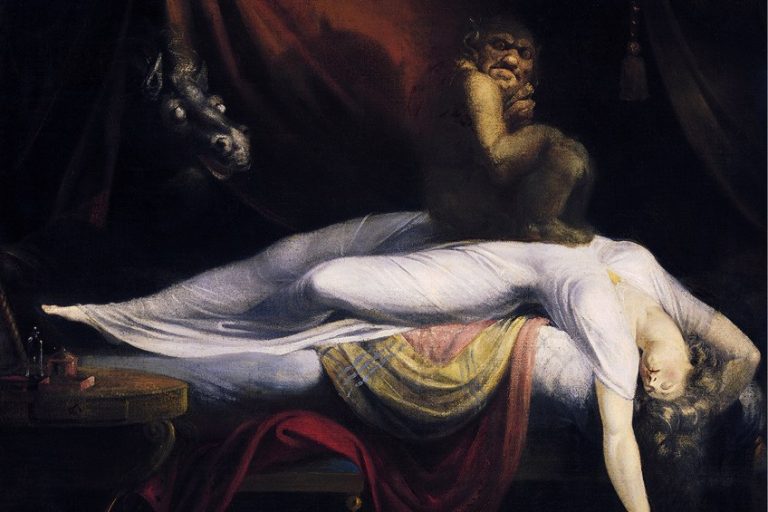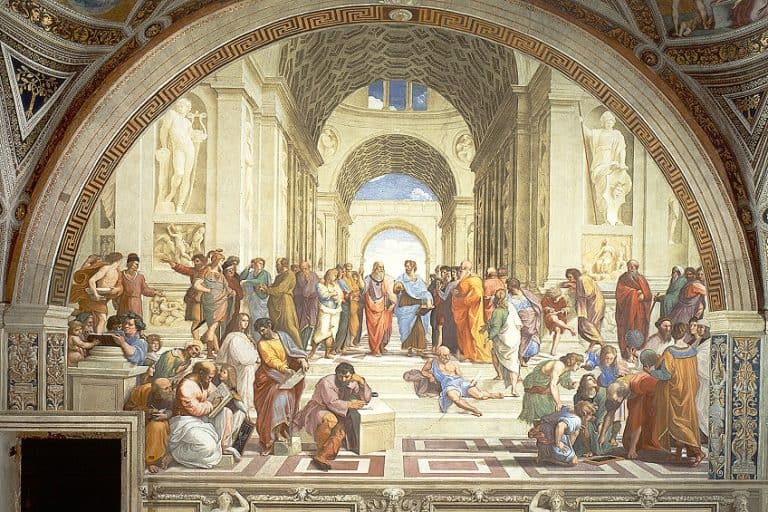“The Elevation of the Cross” by Peter Paul Rubens – An Analysis
The Elevation of the Cross, a monumental masterpiece by the Flemish Baroque artist Peter Paul Rubens, stands as a testament to the power and drama of religious art in the 17th century. Completed between 1610 and 1611, this awe-inspiring triptych captures the moment of Christ’s crucifixion with unparalleled intensity and emotional depth. The work, housed in the Cathedral of Our Lady in Antwerp, Belgium, showcases Rubens’ mastery of composition, color, and dynamic movement, inviting viewers into a profound exploration of faith, redemption, and human suffering. Join us as we delve into the intricate details and symbolism of this iconic artwork, uncovering its enduring impact on art history and spirituality.
Table of Contents
- 1 Key Takeaways
- 2 Historical Context
- 3 Analysis of The Elevation of the Cross
- 4 Provenance and Influence
- 5 Frequently Asked Questions
- 5.1 What Symbols Are Present in The Elevation of the Cross That Contribute to Its Meaning?
- 5.2 What Techniques Did Peter Paul Rubens Use in The Elevation of the Cross to Convey Emotion?
- 5.3 In What Historical Context Was The Elevation of the Cross Created?
- 5.4 How Does The Elevation of the Cross Compare to Rubens’ Other Works?
Key Takeaways
- The Elevation of the Cross was painted by Peter Paul Rubens between 1610 and 1611.
- The triptych was originally commissioned for the Church of St. Walburga in Antwerp.
- The painting exemplifies Baroque art with its dynamic composition and emotional intensity.
Historical Context
| Artist | Peter Paul Rubens (1577 – 1640) |
|---|---|
| Date Created | 1610 – 1611 |
| Medium | Oil on wood |
| Genre | Religious painting |
| Period/Movement | Baroque |
| Dimensions (cm) | 462 × 341 |
| Series/Versions | Single version |
| Where Is It Housed? | Cathedral of Our Lady, Antwerp, Belgium |
| What It Is Worth | Not publicly auctioned; extremely high cultural and historical value |
Peter Paul Rubens’s masterpiece, The Elevation of the Cross, is an iconic example of Baroque art, characterized by its dramatic intensity and emotional depth. Completed between 1610 and 1611, this powerful triptych was originally commissioned for the high altar of the Church of St. Walburga in Antwerp, Belgium. Today, it stands prominently in the Cathedral of Our Lady in Antwerp, captivating visitors with its dynamic composition and masterful use of light and shadow.
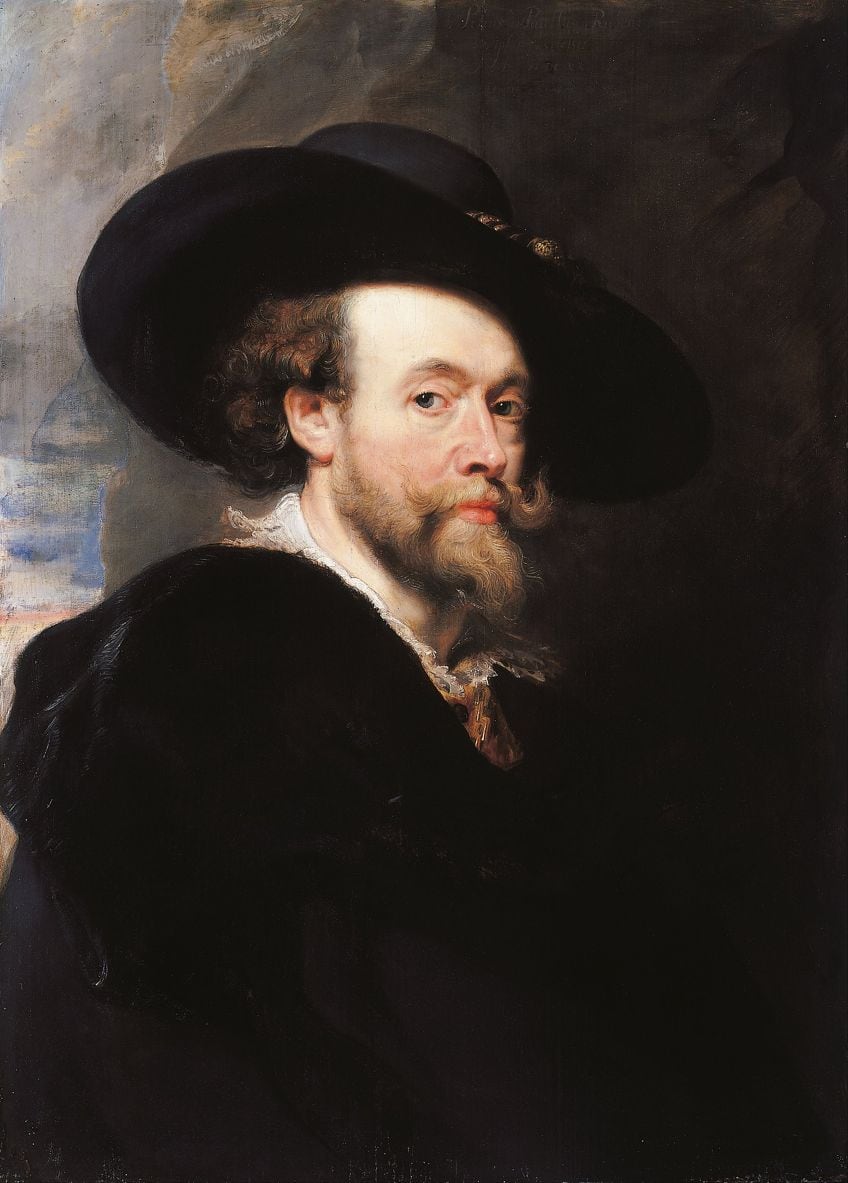
Rubens skillfully depicts the moment when the cross-bearing Christ is being raised, capturing the physical strain and spiritual significance of the scene. The painter’s use of robust figures and vigorous movement exemplifies the Baroque style’s aim to engage viewers on a visceral level. This painting not only highlights Rubens’s artistic genius but also reflects his deep religious conviction and understanding of human expression. The Elevation of the Cross remains a pivotal work in Rubens’s oeuvre, influencing countless artists and embodying the grandeur of Baroque art.
Its historical and cultural significance continues to resonate, making it a must-see for art enthusiasts and scholars alike.
Artistic Milieu in Baroque Europe
The Baroque period in Europe, which spanned the 17th century, is characterized by dramatic expression, movement, and clear detail to produce tension, exuberance, and grandeur in sculpture, painting, architecture, literature, dance, and music. Influenced by the Italian Renaissance, Baroque art became dominant across much of Europe. Rubens, a leading Flemish artist, was significantly inspired by his travels in Italy. Here, he absorbed the works of masters such as Michelangelo, Caravaggio, and Tintoretto. The use of chiaroscuro—contrasting light and dark—along with dynamic compositions, became hallmarks of Rubens’ style. Artists of this era often engaged with intricate details and robust emotional contents. Baroque art aimed to evoke emotional responses and convey powerful messages. Rubens’ The Elevation of the Cross exemplifies these qualities through its intense dramatic action and muscular figures.
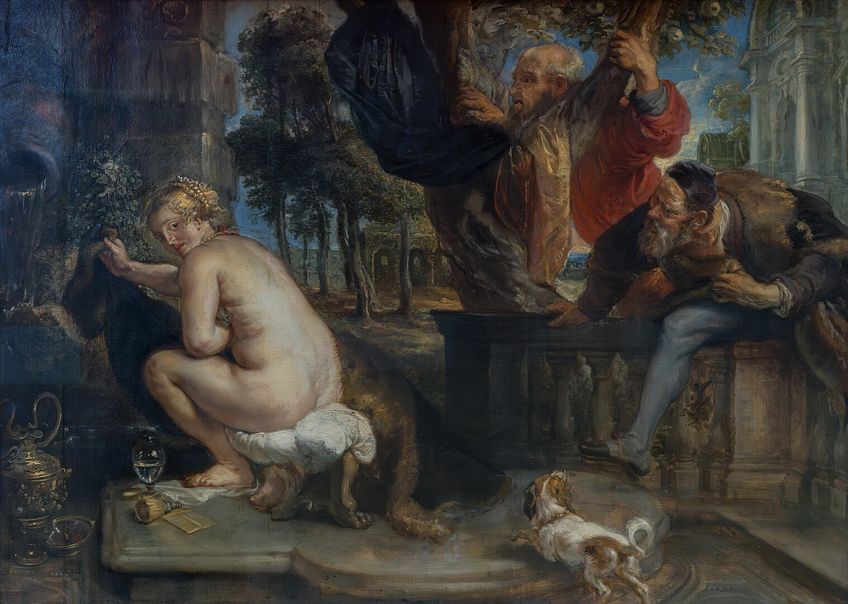
Counter-Reformation and Religious Works
The Counter-Reformation, led by the Catholic Church to counter the rise of Protestantism, greatly influenced the artistic direction of the Baroque period. Art became a tool of propaganda, designed to inspire faith and convey the doctrines of the Catholic Church. Religious subject matter dominated Baroque art, reflecting the Church’s agenda to reaffirm its spiritual and political power. Works commissioned by religious institutions were intended to communicate religious themes and elicit piety among the faithful. Rubens’ The Elevation of the Cross, originally commissioned for the Church of St. Walburga in Antwerp, serves as an example of such religious art.
The painting’s intense emotion, dramatic composition, and vivid depiction of Christ’s suffering align with the Counter-Reformation’s goals of evoking devotion and illustrating the Catholic narrative.
Analysis of The Elevation of the Cross
Peter Paul Rubens’ The Elevation of the Cross displays his mastery of the Baroque style, blending dynamic compositions, dramatic light and shadow, and symbolic elements. The triptych format and focus on the Crucifixion highlight its religious significance and artistic innovation.
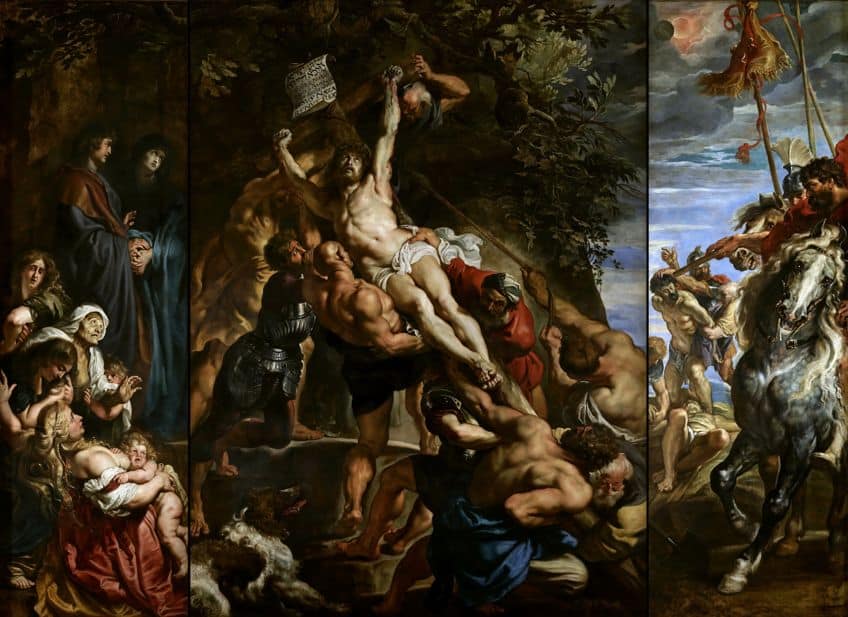
Composition and Symbolism
Rubens’ triptych format allows for a dramatic and expansive depiction of the Crucifixion. The central panel captures the moment Christ is raised on the cross. The composition directs the viewer’s eye diagonally from the lower left to the upper right, emphasizing movement and tension. Strong, muscular figures strain to lift the cross, illustrating human effort and divine sacrifice.
This tension is a hallmark of Baroque art, making the viewer feel the physical and emotional weight of the scene.

Light, Color, and Brushwork
Rubens employs tenebrism, influenced by Caravaggio, to intensify the scene. Deep shadows contrast with the bright illumination of Christ’s body, heightening the drama. His use of color is meticulous; the reds and blues of the clothing highlight the figures against a dark background. The brushwork is dynamic and fluid, bringing energy and realism to the depiction.
Rubens’ technique allows for a sense of immediacy and life.

Figures and Iconography
The figures in The Elevation of the Cross are robust, muscular, and full of vitality, reflecting Rubens’ study of anatomy and classical sculpture. The foreshortened bodies create a sense of depth and realism. Rubens infuses the scene with symbolic iconography. Christ, centrally positioned, serves as the focal point, symbolizing his sacrifice. The expressions and poses of the surrounding figures convey a range of emotions from anguish to determination.
The influence of artists like Michelangelo and Caravaggio is evident in the powerful physicality and emotive quality of the characters.
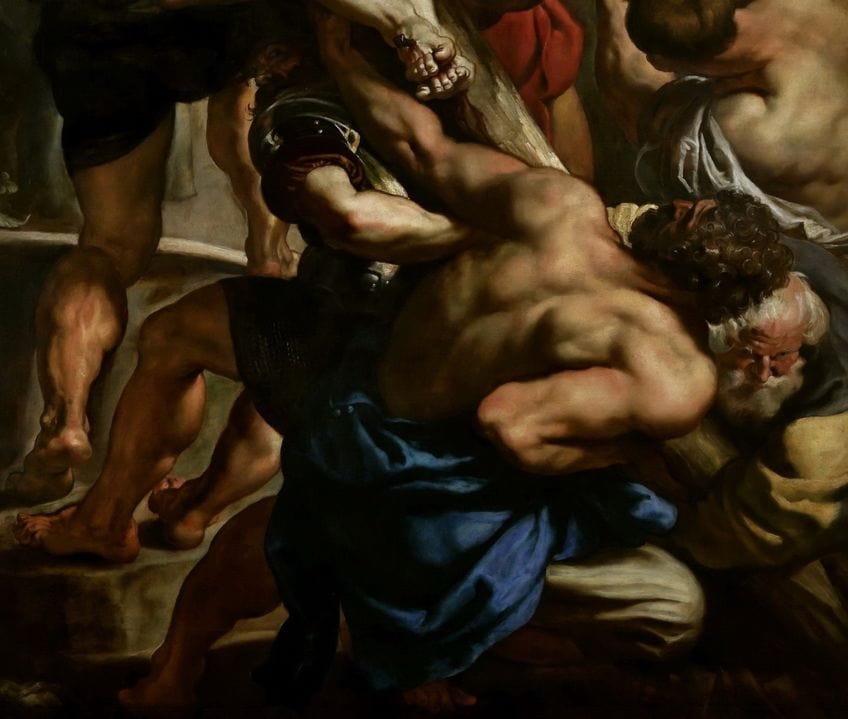
Provenance and Influence
The Elevation of the Cross has traversed notable locations and left a significant mark on Baroque art. It has influenced many subsequent artists and movements. Originally commissioned for the high altar of the Church of St. Walburga in Antwerp by Cornelis van der Geest, the triptych was celebrated for its grand scale and dramatic intensity. Following the church’s demolition, the work was relocated to the Cathedral of Our Lady in Antwerp, where it remains a central piece. During Napoleon’s rule, the painting was removed and taken to Paris. It was later returned to Antwerp after the fall of Napoleon.
Hans Witdoeck, a contemporary of Rubens, created reproductions, ensuring its designs reached a wider audience.
Impact on Baroque Art and Legacy
Rubens’ depiction of the crucifixion brought a dynamic approach to biblical scenes, blending intense emotion with movement. His use of light and shadow, muscular figures, and dramatic composition set a precedent for Baroque art. The influence of The Elevation of the Cross extends beyond Europe, resonating in collections such as the Art Gallery of Ontario’s Permanent Collection. Rubens’ mastery inspired artists across generations, shaping the evolution of religious and historical painting. His work continues to be a subject of study and admiration in art institutions worldwide.
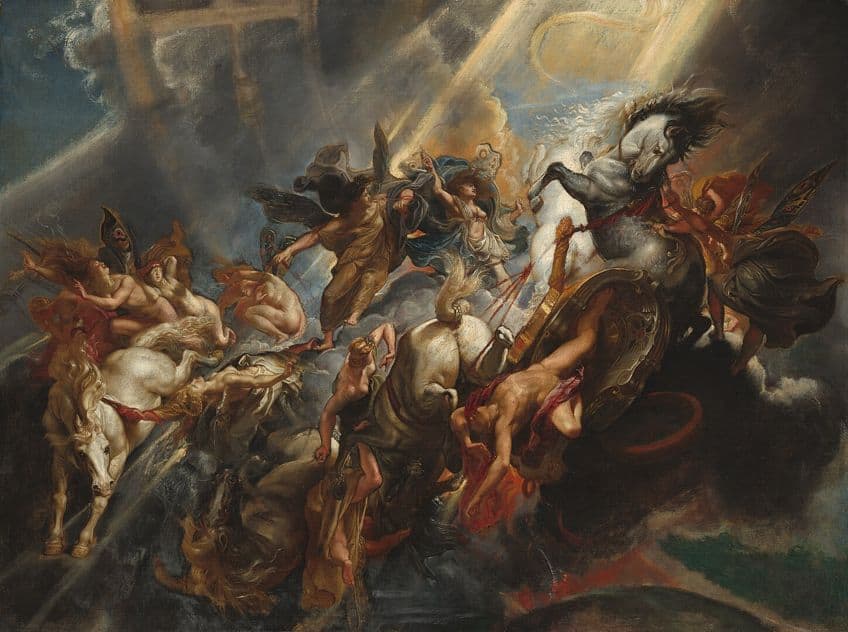
The Elevation of the Cross by Peter Paul Rubens remains a pinnacle of Baroque artistry and religious expression. Its grandeur, emotional resonance, and technical brilliance continue to captivate audiences centuries after its creation. Through its portrayal of the crucifixion, Rubens invites us to contemplate the profound themes of sacrifice, redemption, and the divine, leaving an indelible mark on the history of art and spirituality. As we reflect on this monumental triptych, we are reminded of the enduring power of visual storytelling to evoke deep emotions and provoke meaningful contemplation.
Frequently Asked Questions
What Symbols Are Present in The Elevation of the Cross That Contribute to Its Meaning?
In The Elevation of the Cross, Rubens uses symbols like the stark contrast between light and shadow to highlight the suffering and sacrifice of Christ. The depiction of Roman soldiers and the struggling figures emphasize the brutality of the event, reinforcing the gravity of the crucifixion.
What Techniques Did Peter Paul Rubens Use in The Elevation of the Cross to Convey Emotion?
Rubens employs dramatic lighting and dynamic composition to convey intense emotion. The diagonals in the composition create a sense of movement and tension. The exaggerated muscular strains of the figures, along with the vivid facial expressions, heighten the emotional impact of the scene.
In What Historical Context Was The Elevation of the Cross Created?
The Elevation of the Cross was created between 1610 and 1611 during the Baroque period. It was commissioned for the high altar of the Church of St. Walburga in Antwerp, which was later destroyed. The period was marked by a focus on dramatic, intense artistry, often with religious themes.
How Does The Elevation of the Cross Compare to Rubens’ Other Works?
Both The Elevation of the Cross and The Descent from the Cross are significant works by Rubens, showcasing his mastery of emotion and dynamic composition. While The Elevation of the Cross focuses on the physical act of raising the cross, The Descent from the Cross captures the somber moment of Christ being taken down. Both works exhibit his use of light and shadow to enhance dramatic effect.
Isabella studied at the University of Cape Town in South Africa and graduated with a Bachelor of Arts majoring in English Literature & Language and Psychology. Throughout her undergraduate years, she took Art History as an additional subject and absolutely loved it. Building on from her art history knowledge that began in high school, art has always been a particular area of fascination for her. From learning about artworks previously unknown to her, or sharpening her existing understanding of specific works, the ability to continue learning within this interesting sphere excites her greatly.
Her focal points of interest in art history encompass profiling specific artists and art movements, as it is these areas where she is able to really dig deep into the rich narrative of the art world. Additionally, she particularly enjoys exploring the different artistic styles of the 20th century, as well as the important impact that female artists have had on the development of art history.
Learn more about Isabella Meyer and the Art in Context Team.
Cite this Article
Isabella, Meyer, ““The Elevation of the Cross” by Peter Paul Rubens – An Analysis.” Art in Context. June 24, 2024. URL: https://artincontext.org/the-elevation-of-the-cross-by-peter-paul-rubens/
Meyer, I. (2024, 24 June). “The Elevation of the Cross” by Peter Paul Rubens – An Analysis. Art in Context. https://artincontext.org/the-elevation-of-the-cross-by-peter-paul-rubens/
Meyer, Isabella. ““The Elevation of the Cross” by Peter Paul Rubens – An Analysis.” Art in Context, June 24, 2024. https://artincontext.org/the-elevation-of-the-cross-by-peter-paul-rubens/.


